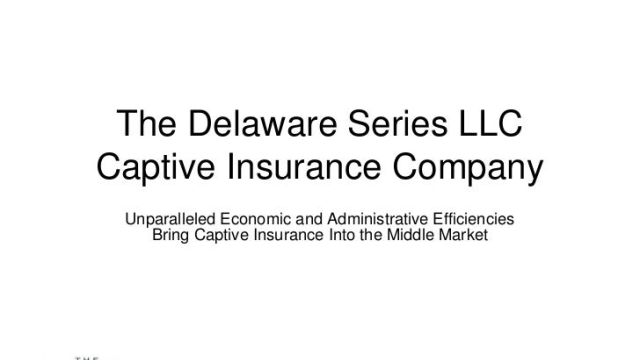Are you a small business owner searching for ways to protect your assets while reducing your tax liability? Look no further than Section 831(b) of the Internal Revenue Code, also known as the captive insurance provision. This often overlooked section offers hidden benefits that can prove to be a game-changer for businesses looking to mitigate risks and maximize tax savings.

Captive insurance, at its core, is a specialized form of self-insurance where a company establishes its insurance company to cover its specific risks. Section 831(b) specifically caters to microcaptives, which are captive insurance companies with annual premiums of $2.3 million or less. This provision provides substantial advantages to these microcaptives, making it an attractive option for many small to mid-sized businesses.
Under IRS 831(b) tax code, microcaptives enjoy unique tax benefits. For starters, the premiums paid to the captive insurance company are tax-deductible expenses for the operating business. Additionally, the insurance company’s underwriting profits, up to $2.3 million per year, are not subject to federal income tax. This provision allows businesses to retain more of their hard-earned profits and reinvest them back into the company’s growth.
While these tax advantages are enticing, it’s important to note that Section 831(b) must be utilized properly to avoid running afoul of the IRS’s regulations. Compliance is crucial, and this is where the guidance of experienced professionals can be invaluable. By working with knowledgeable advisors who specialize in captive insurance, businesses can unlock the full potential of Section 831(b) while staying within the bounds of the law.
In the following sections, we will delve deeper into the intricacies of Section 831(b), exploring different ways businesses can structure their captive insurance arrangements to maximize tax benefits and protect their assets effectively. Stay tuned to learn how this often overlooked provision can be a powerful tool in your business arsenal.
Understanding Section 831(b)
Section 831(b) is a key part of the IRS tax code that relates to captive insurance companies. It provides a beneficial tax treatment for small insurance companies, known as microcaptives. By familiarizing ourselves with the intricacies of this section, we can unlock hidden benefits and opportunities.
The essence of Section 831(b) lies in the tax advantages it offers to qualifying microcaptives. These captives are insurance companies that primarily serve the needs of their parent companies or related entities. By electing to be taxed under this section, microcaptives can avail themselves of special tax treatment.
One significant benefit of Section 831(b) is the ability for microcaptives to exclude certain premiums from income, subject to certain limits. This gives them the opportunity to accumulate funds for future claims or to invest in growth while potentially deferring tax obligations. Microcaptives that meet the necessary criteria can enjoy this tax advantage, making it a valuable tool for managing risk and optimizing financial resources.
In conclusion, understanding Section 831(b) is crucial for businesses considering the utilization of captive insurance companies. With its favorable tax treatment, microcaptives can leverage this section to unlock hidden benefits and capitalize on the opportunities it presents. By diving deeper into the specifics of Section 831(b), businesses can make well-informed decisions that align with their risk management and financial goals.
Exploring Captive Insurance
Captive insurance is a unique and innovative risk management strategy that has gained significant attention in recent years. It provides businesses with the opportunity to establish their own insurance company, known as a captive, to insure against their own risks. This alternative approach allows companies to have more control over their insurance coverage and potentially unlock hidden benefits.
By forming a captive insurance company, businesses can tailor their insurance policies to meet their specific needs. Rather than relying solely on traditional insurance providers, captives enable companies to create customized policies that align with their risk management objectives. This increased flexibility and control can lead to more efficient and cost-effective coverage options.
One particular provision in the tax code, known as Section 831(b), has contributed to the rise in popularity of captive insurance. Under this section, small captives can elect to be taxed only on their investment income, rather than their underwriting profits. This favorable tax treatment can result in significant tax savings, making captive insurance an attractive option for eligible businesses.
Microcaptives, a subset of captive insurance companies with low levels of annual written premiums, have also emerged as a popular choice. These microcaptives can provide smaller businesses with similar benefits and opportunities for risk management and tax advantages. With careful planning and compliance with IRS guidelines, microcaptives can unlock hidden benefits for these businesses.
Captive insurance, whether through Section 831(b) or microcaptives, offers an alternative solution for businesses to manage their risks and optimize their insurance coverage. As more companies explore this strategy, it’s crucial to understand the potential benefits and considerations associated with captive insurance to make informed decisions for risk management and financial planning.
Maximizing the Benefits
When it comes to maximizing the benefits of Section 831(b) and leveraging the potential of captive insurance, there are several key strategies to consider.
Firstly, careful selection of risks is crucial. As a business owner exploring the benefits of a microcaptive insurance arrangement, identifying the risks that have the greatest potential for cost savings or coverage improvements is essential. By analyzing and understanding your business risks, you can ensure that your captive insurance arrangement provides the most value and protection.
Secondly, effective risk management is paramount. Maintaining a comprehensive risk management program can help you identify and mitigate potential risks, leading to better underwriting results and improved loss prevention. By actively managing and monitoring your risks, you can optimize your captive insurance arrangement and make informed decisions regarding coverage and premiums.
Lastly, engaging with experienced professionals in the captive insurance industry is highly recommended. Seeking guidance from experienced captive managers, tax advisors, and legal experts will help ensure compliance with the IRS 831(b) tax code and maximize the potential benefits of your captive insurance arrangement. Their expertise can assist in navigating the complexities of captive insurance, enabling you to make informed decisions that align with your business objectives.
By implementing these strategies and utilizing the opportunities offered by Section 831(b), businesses can unlock the hidden benefits of captive insurance, providing enhanced risk management capabilities and potential tax advantages.



